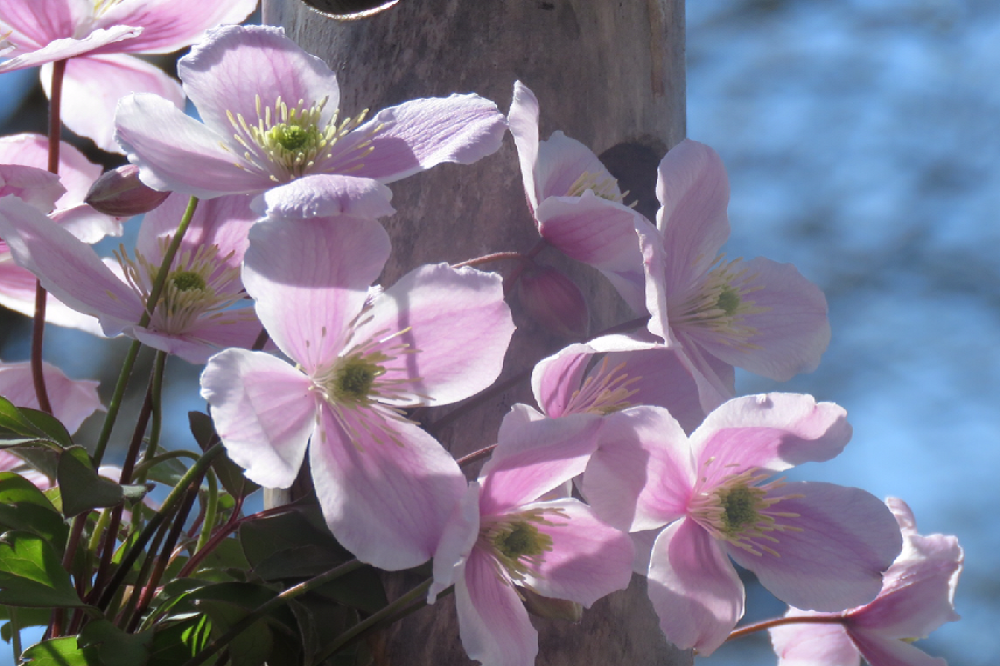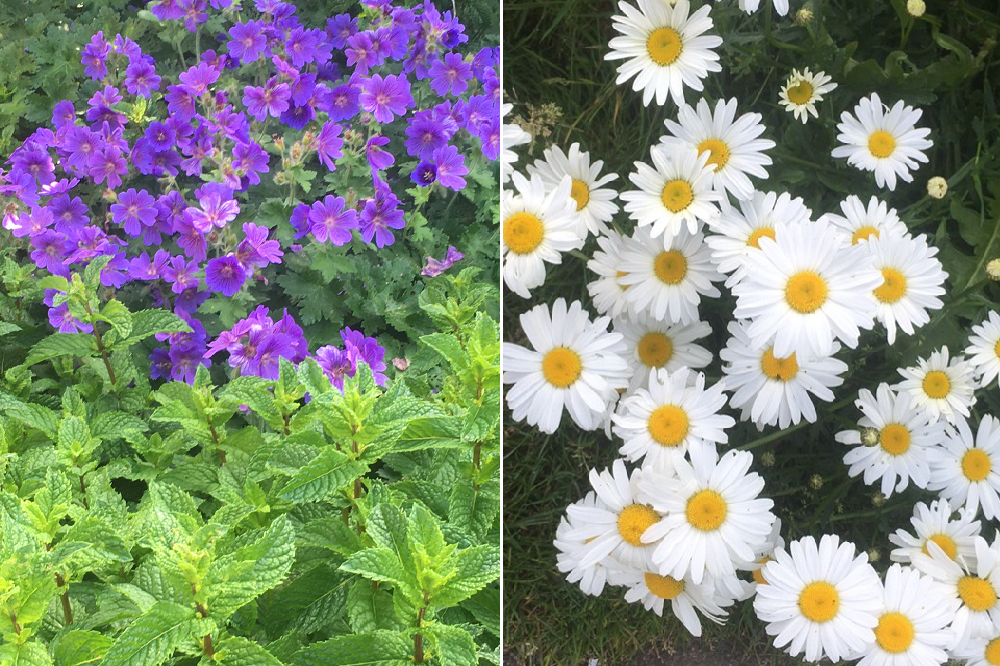As the Six Nations draws to a close, the garden wakes

Sarah Morgan Jones
In my mind the Six Nations is the transitional phase from winter to spring. Arriving during the most wearisome point in the calendar, when enough is enough, quite frankly, like the tail end of an illness that has gone past the feeling-sorry-for-yourself phase and into the just-plain-bored-of-this-now.
By the end of the tournament, whatever has befallen the team over the last six weeks, something is happening. There is hope, there is a change in the weather, the daffs have long since arrived and the trees are in bud.
Everything looks a bit cleaner and greener, the birds at the feeder are louder and more frivolous, and it’s not yet dark when the PM programme at 5 o’clock rounds up the news…which, sadly, doesn’t improve with the season.
So, as Super Saturday arrives, and the final vapours of illness escape through the cracks, I start looking at my garden with a fresh eye.
Despite the ravages of Arwen, Eunice, Franklin and Gladys, each of which took a chunk from the greenhouse, the fence and the pot plants, despite the mottled lawn, ploughed by zooming dog feet, despite the piles of detritus which could once have been useful but now need burning or skipping, the generator of the garden is chuffing into life.
My garden is a useful-sized south-facing patch of former-council land, high up on a hill estate, with the smell, if not the sight, of the sea. Like many of the houses up here, we are partly hemmed in with privet, partly with recycled fencing, and in full fettle it provides food for the soul and the body.
Although we rarely get significant snow or even hard frost, being so high up, the garden is noticeably two weeks behind the city gardens closer to the sea. The microclimate up here is a constant source of wonder. It is not uncommon for great bodies of fog to tumble over the garden boundaries reducing visibility to single-figure-feet, while down at sea level it is balmy and bright.

Spectacular symphony
As the magnolia trees down the hill pop open their pink and white purses with breath-taking panache, my scrawny specimen, which came from Wilko five years ago and still hasn’t decided what it’s for, has got tiny buds which may yet come to nought.
While the cherry trees are already chuckling elsewhere, the one in my front garden, thriving in the face of the relentless north-easterlies, is just at the start of its symphony, which it performs quite spectacularly for a brief three weeks every spring.
It sits near the pavement, just at the top of the cul-de-sac, bought to mark ten years of a loss, and to entertain my then-fading mother. Although the blossom takes time to get going and disappears in a flurry of confetti in no time at all, each year one neighbour knocks the door to tell me how much she loves seeing it, how now, nursing her own bereavements, it makes her think of her own dear mum who used to love it too.
Each year I think the clematis has seen its last, looking for all the world like scruffy dead sticks, messing up the messy view of the messy fence, while elsewhere, lower down, pink Montana kisses are already gracing faces of the passers-by.
But I hold on, because…here it comes…hundreds and thousands of buds, on mile-a-minute tendrils, hitching a ride on the honeysuckle-which-has-never-flowered, inveigling its way into the haphazard raspberry canes and next door’s privet…another brief but beautiful visitation which truly confirms the transition into longer days and warmer rays.
The mint, contained in a raised concrete bed, which began with one single sprig, is already coming back, far earlier than normal, preparing to provide mint sauce for all the neighbours for another year to come. It is a bucking-bronco of a plant, which at full height, shades the suntrap outside the kitchen door from the noonday sun.

Promiscuous ranunculus
A keen but haphazard gardener, I have tried, in the near decade since I became guardian of this garden to shape it, painting the landscape I’d like to see.
When I scan through the thousands of photos taken over the years, it swells and subsides, some years replete with poppies and potatoes, others boasting a perfect mossy lawn as comfy as a mattress, surrounded by Michaelmas daisies, montbretia and cranesbill (within two weeks of our new dog joining the family, that same lawn was excoriated, stripped down to its roots and, five years on, has not yet fully recovered).
I plant digitalis and lupin and delphinium and mallow, and sometimes they thrive, sometimes they are destroyed by the dog, and sometimes they disappear without trace only to re-emerge the following year, from an ugly crack in the paving at the top of the garden, or from the rotting log pile in the corner, without warning or invitation and nowhere near where it was planted.
Threatening everything is the rampantly promiscuous ranunculus, the humble buttercup, and what we used to call granny-pop-out-of-bed: twining bindweed or convolvulus with its brilliant white, trumpet shaped flowers.
Neither of these bullies bloom, while they set about throttling everything in their stampeding sight, unless I intercept their journey with shears or a mattock or a spade. Then, just maybe, they will demurely raise their sweet faces to the sun, as if butter wouldn’t melt.

So, as I write, and while the final rugby-induced whoops and hollers come flying up the stairs from my gardener-in-arms, I think about the forthcoming season of blooms and surprises and wonder what traps the garden will set for me.
I long for sunshine and time to coincide so I can potter at leisure, and for the rain to fall in the early morning, and for the washing to snap and flap on the line, and for the fire pit and Guinness evenings spotting the bats as they swoop and peep as the last light disappears.
The garden lets me think I have a say in how it looks, but in reality, it probably calls the clearest tune as it leads me on a seasonal dance. Whatever the truth, I welcome it.
Support our Nation today
For the price of a cup of coffee a month you can help us create an independent, not-for-profit, national news service for the people of Wales, by the people of Wales.





The ongoing battle against dog damage is very real and I share your pain! But this is lovely – the ‘painting’ of your garden is so vividly described and it has a gorgeous, lilting rhythm. Brillo!